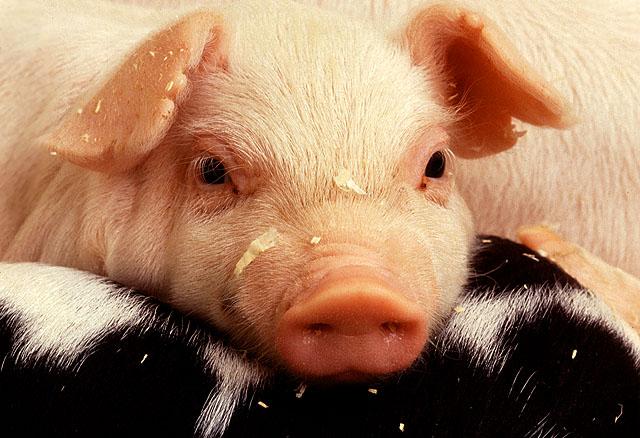Researchers looking for molecular clues to help global health officials assess the risk from the new H7N9 virus in China reported this week that it is adept at attaching to human lower and upper respiratory tract cells and that it replicates efficiently in swine airway tissues.
In the first study, researchers from Erasmus University Medical Centre in the Netherlands explored airway attachment patterns of two genetically engineered H7 viruses that contained the hemagglutinin of either a Shanghai or Anhui H7N9 strain. They published their findings yesterday in the October issue of the American Journal of Pathology, published by Elsevier.
They used histochemical analysis to examine the patterns of attachment to different types of human airway tissues, and they compared patterns with those seen in other flu viruses that infect humans to different degrees, including H3N2, 2009 H1N1, and H5N1.
Similar to other avian influenza viruses, H7N9 attached more strongly to tissues in the lower than the upper airway, the authors found. But unlike other avian flu viruses, H7N9 had abundant attachments to epithelial cells in the bronchioles and alveoli and attached to a broader range of cell types.
Thijs Kuiken, DVM, PhD, said in an Elsevier press release, “These characteristics fit with increased virulence of these emerging avian H7 viruses compared to that of human influenza viruses.”
Another key finding from the experiments was more concentrated attachment of H7N9 viruses in ciliated cells in the nasal concha, trachea, and bronchi, which hint at the potential for efficient transmission in humans. However, Kuiken said the mainly sporadic pattern of H7N9 infections suggests that the virus hasn’t acquired all the properties it needs for efficient transmission among humans.
He said that though the attachment pattern emerging with the H7N9 virus in China suggests the potential for severe disease and efficient transmission, attachment is only the first step in the virus’ replication cycle and that other steps, as well as the host response, need to be considered to fully gauge the virus's pandemic potential.
In the swine tissue study, researchers wrote that their goal was to see if the H7N9 virus has the potential to infect pigs, which are often in contact with humans and poultry in agricultural and market settings and have been known to play a role in generating further virus adaptations in mammals. The group, including scientists from China, Hong Kong, and St. Jude Children’s Research Hospital in the United States, published its findings on Sep 11 in the Journal of Virology.
“That they may infect swine and generate additional mammalian adaptations is a significant public health concern,” the team wrote. An earlier study by a Chinese team found that H7N9 could infect pigs experimentally, but it didn’t appear to spread to cagemates.
The team noted that swine farm surveillance in China’s outbreak areas has found no H7N9 in more than 4,000 animal or environmental samples.
To further explore H7N9 infectivity pigs, the group used swine respiratory tissue samples (“explants”) to mimic patterns seen in live animals. They noted that the process is less cumbersome and cheaper than using large animals and provides a rapid and more humane way to test larger numbers of influenza viruses.
Testing included three H7N9 strains and three controls, including one not known to infect swine. The three human H7N9 strains replicated efficiently in upper and lower respiratory tissue of pigs.
The findings confirmed that the new H7N9 virus is capable of infecting pigs, which significantly increases the risk of H7N9 outbreaks and the virus's potential for acquiring mutations or gene segments that could enhance transmissibility in mammals, the team concluded.
They noted that human infections detected in China over the summer show that H7N9 is still circulating, but so far there are no systems in place in northern or eastern China to monitor the virus in pigs.
Van Riel D, Leijten L, de Graff M, et al. Novel avian-origin influenza A (H7N9) virus attaches to epithelium in both upper and lower respiratory tract of humans. Am J Pathol 2013 Sep 12;183(4) [Abstract]
Jones JC, Baranovich T, Zaraket H, et al. Human H7N9 influenza A viruses replicate in swine respiratory tissue explants. J Virol 2013 Sep 11 [Abstract]
See also:
Sep 10 Elsevier press release




















